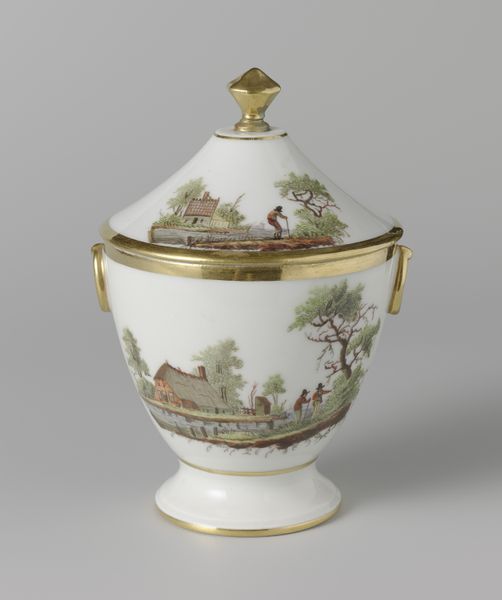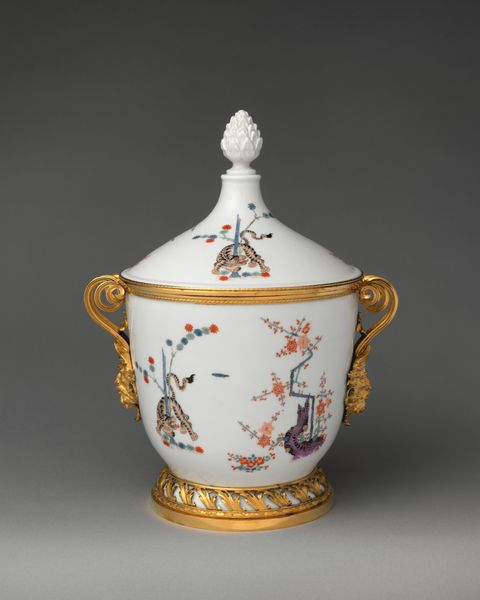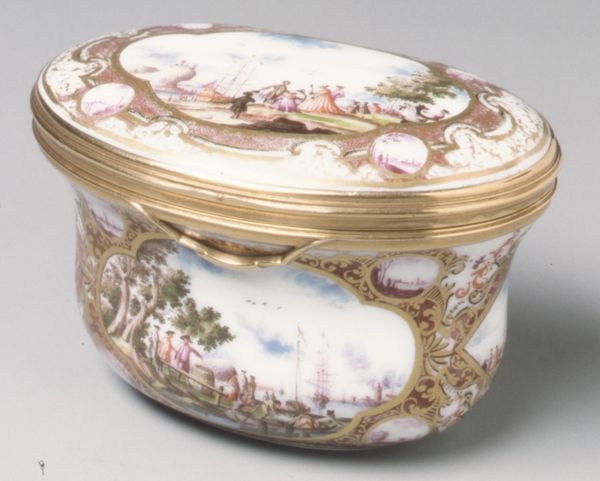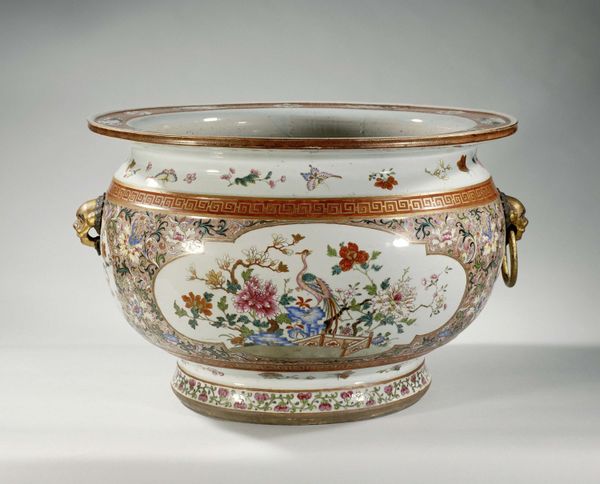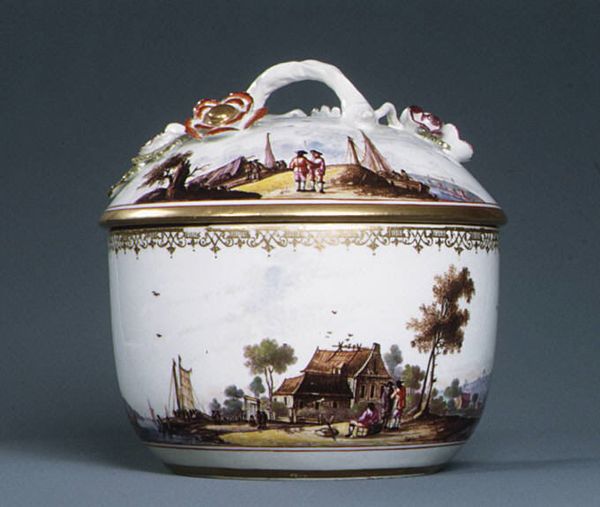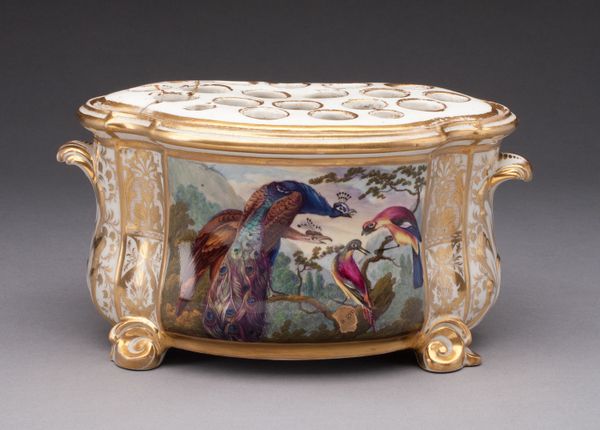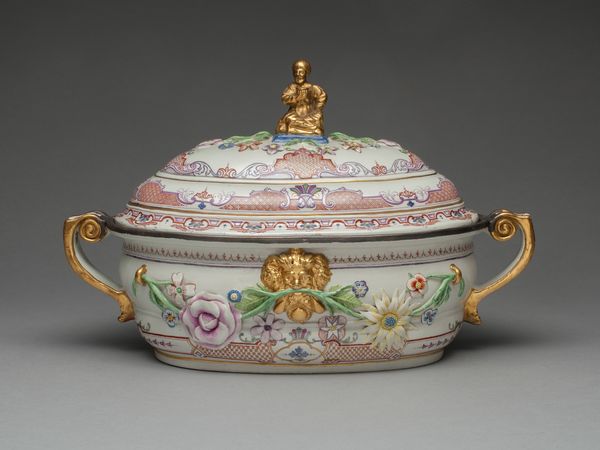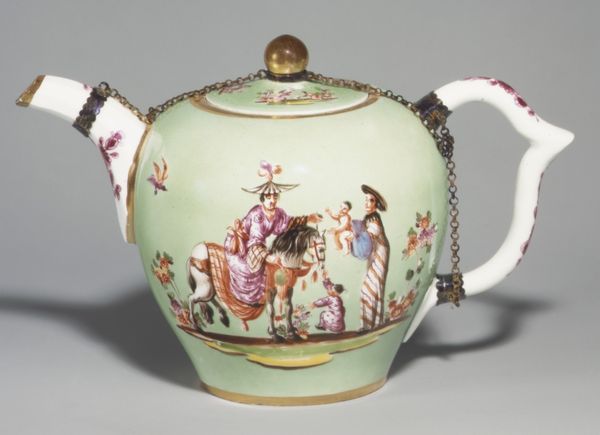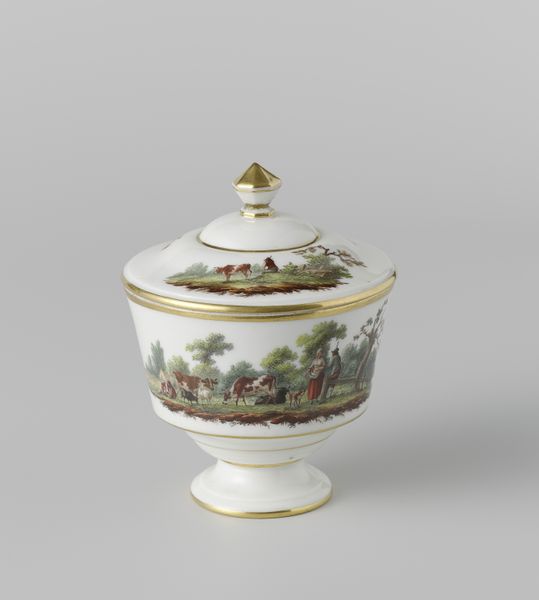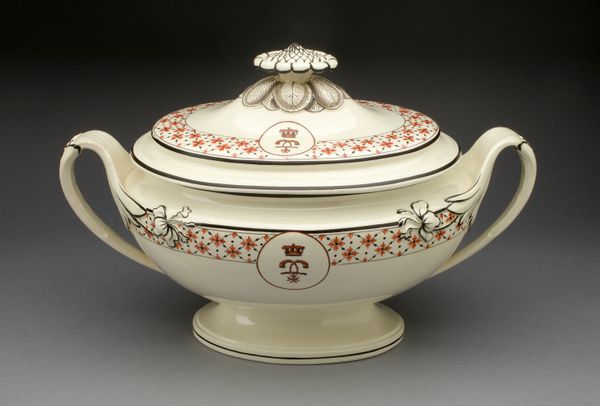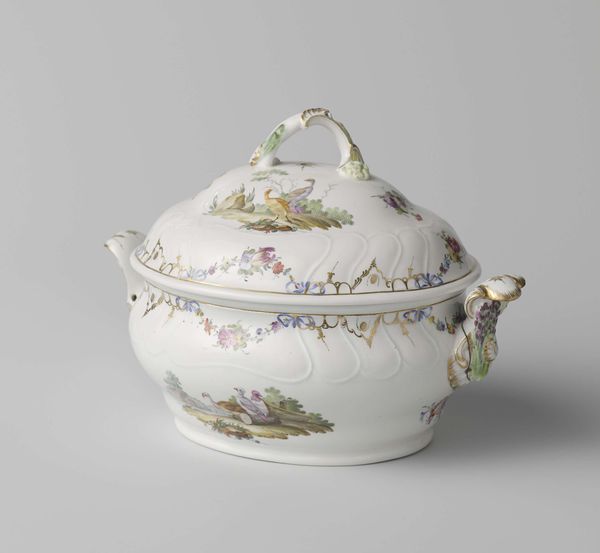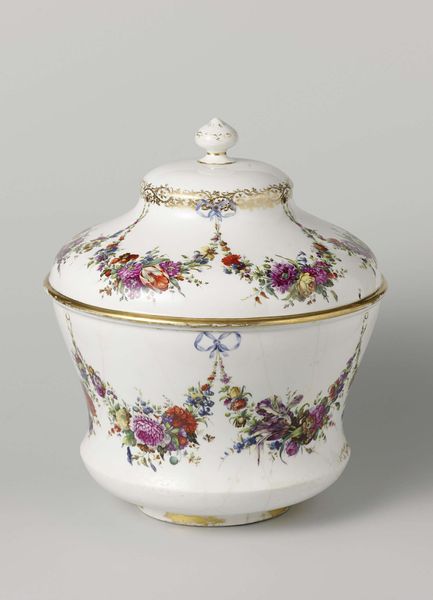
painting, ceramic, porcelain, sculpture
#
ornate
#
decorative element
#
painting
#
ceramic
#
jewelry design
#
porcelain
#
sculpture
#
orientalism
#
ceramic
#
decorative-art
#
rococo
Dimensions: H. with cover 4 in. (10.2 cm.); Diam. 4 3/4 in. (12.1 cm.)
Copyright: Public Domain
Editor: So this is a porcelain "Sugar Bowl with Cover," made around 1730-1740 by the Meissen Manufactory. The ornamentation is quite elaborate! How would you interpret the imagery here? Curator: It's fascinating how the "Sugar Bowl with Cover" presents a microcosm of cultural exchange, filtered through the lens of the Rococo period’s fascination with the exotic. The figures depicted appear to be loosely inspired by Asian cultures, but clearly interpreted through a European sensibility. Notice how the painter used symbolism—architectural motifs to evoke idealized landscapes and cultural aspirations. Editor: I do see how the architectural details hint at broader, perhaps imagined, geographic settings. So, beyond the geographic symbolism, what kind of dialogue do you think the artist hoped to spark? Curator: Think about what sugar meant at that time—a luxury, a status symbol. This bowl isn't merely functional; it’s laden with meaning. The figures around it, are they engaging in trade? Perhaps offering tribute? The images suggest a story of wealth and intercultural exchange. And isn't it interesting that sugar itself traveled these routes? What are the potential shadows in this image? Editor: It’s incredible how an everyday object becomes a canvas for these complex narratives! Looking closely, I wonder about the intentionality behind blending real and imagined landscapes. Curator: It blurs the lines between observation and fantasy, fact and fiction. The object acts as a container for memories of the "Orient" as they were constructed in the European imagination, but simultaneously serves a very grounded, domestic purpose. Editor: I hadn't considered the interplay between fantasy and domesticity. This porcelain piece reveals hidden narratives! Curator: Precisely! By engaging with objects like this, we excavate cultural memories embedded within symbols that time can't erase. It reflects continuity of narratives, interpreted and re-interpreted across centuries.
Comments
No comments
Be the first to comment and join the conversation on the ultimate creative platform.

